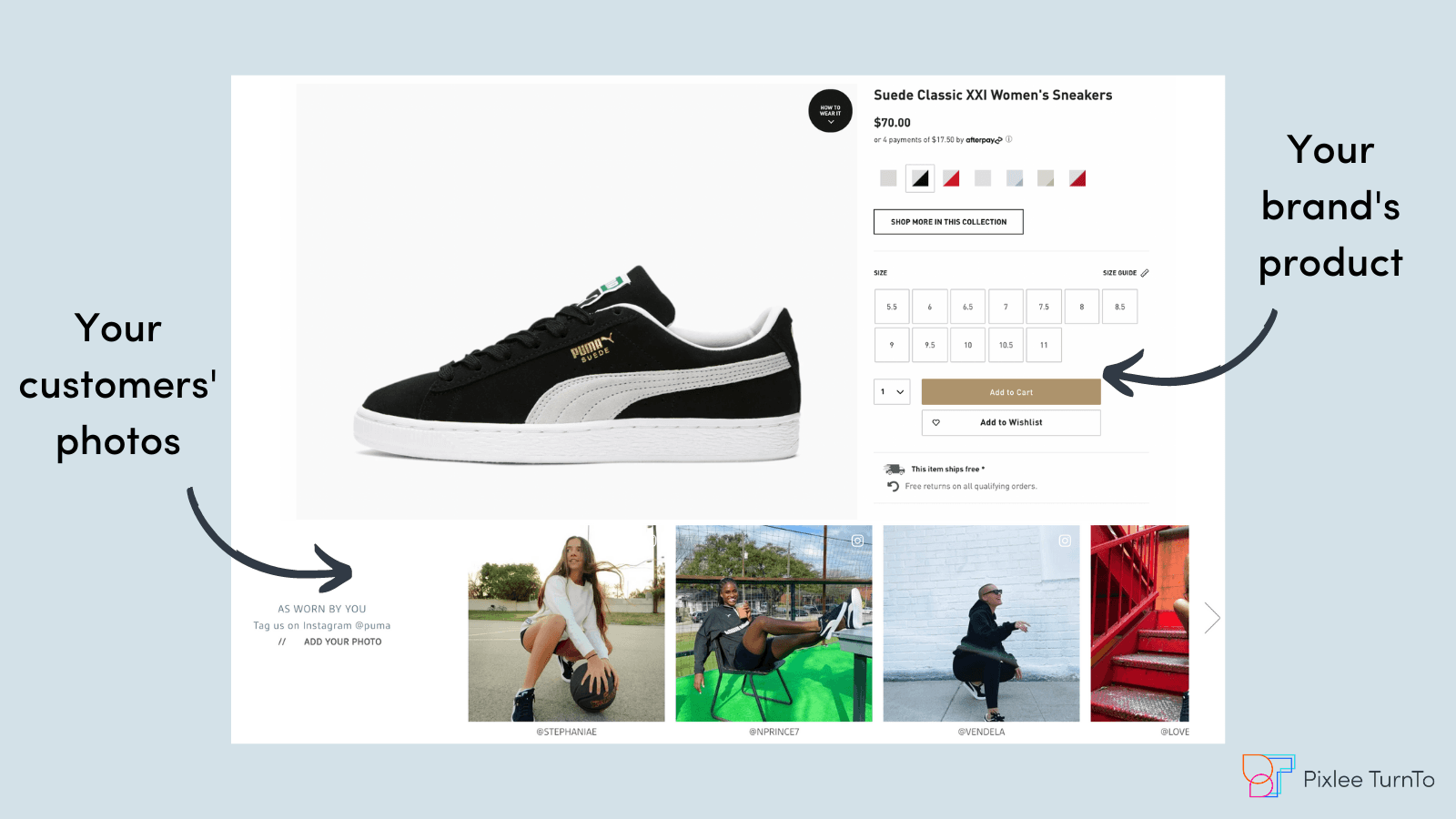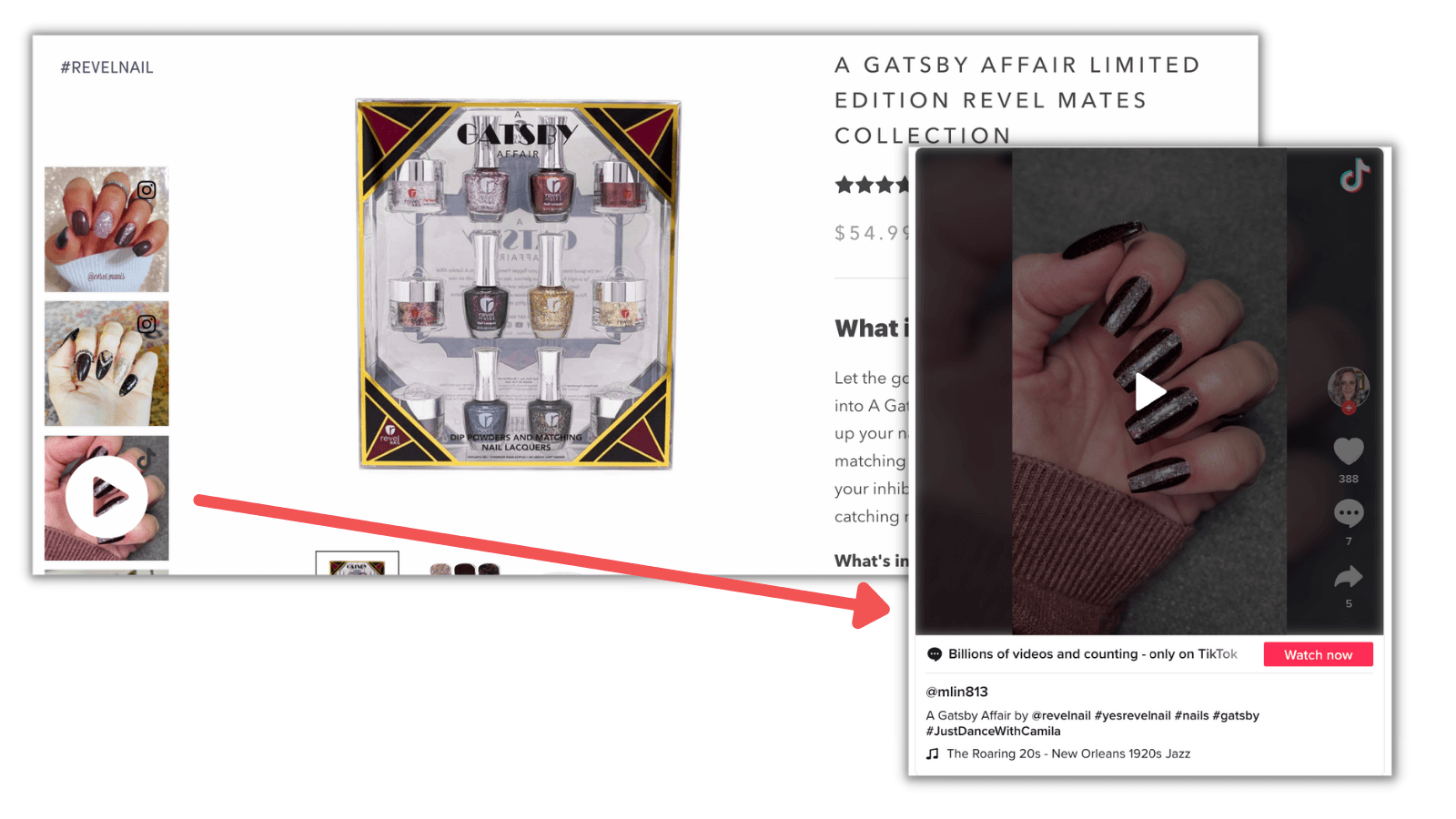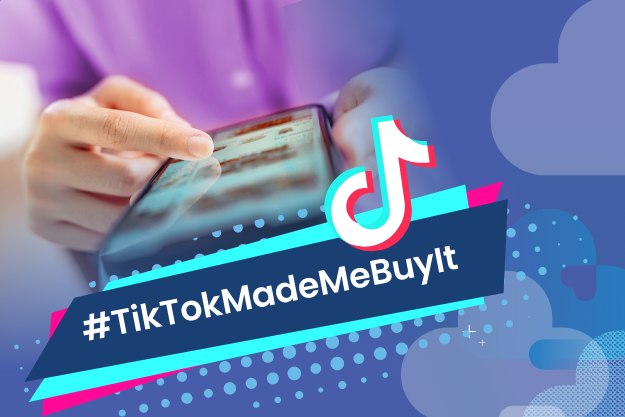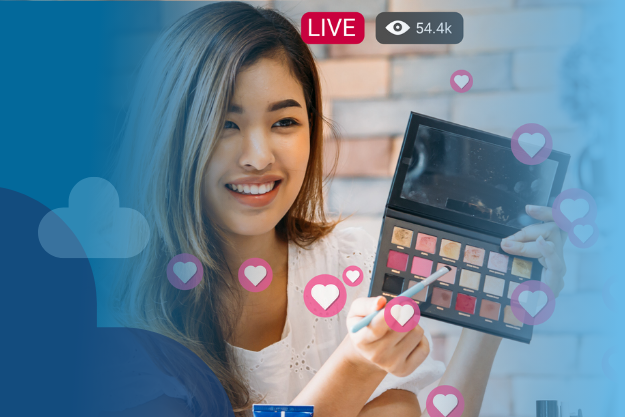The product detail page (PDP) of an eCommerce website is the most important page in the customer journey, as this is where they'll decide whether or not they're going to make a purchase. However…
88% of eCommerce shoppers never return to a website after they have one bad user experience (UX).
44% of these shoppers tell their friends about their poor experiences, leading to lost traffic and revenue for the business.
70% of online businesses fail because of poor UX performance.
How to design the best eCommerce PDP
Luckily, there are several steps you can take to avoid falling victim to these statistics. From social proof to load speed time, let's walk through the areas of the PDP you should be focusing on.
1. Add social proof via user-generated content (UGC)
92% of shoppers trust user-generated content over traditional advertising methods.
UGC is 35% more memorable than other media, and 50% more trusted.
41% of consumers only need to see 1 to 4 UGC reviews to be influenced to buy.
UGC helps your brand establish customer loyalty and grow a community of passionate fans, while increasing conversion. This is because purchase decisions are based on trust, and site visitors are more likely to trust the authentic media shared by real people rather than manufactured by a brand or design studio.

Puma collects (from social media and direct upload), publishes, and analyzes success metrics of community content originally posted on social media. The brand then showcases top content from members of its customer base directly on the product page to help site visitors contextualize their products by viewing them in-action.
By showing your PDP visitors that other people like them love your product, you're increasing their purchase confidence and showing off brand affinity. If you love this idea, you can take on a similar approach with your influencer marketing strategy, featuring influencer content on your product pages.
2. Facilitate omnichannel experiences
Companies with omnichannel engagement strategies retain 89% of their customers on average.
Marketers who use three or more channels for one campaign observed a 287% higher purchase rate than the ones using a single-channel campaign.
Omnichannel marketing campaigns offer 250% higher purchase frequency than single-channel campaigns.
So where does the PDP fit into omnichannel marketing? In addition to keeping your eCommerce team and social media team on the same page when it comes to design, language, tone, and values, the PDP is another place to feature content from your brand's different channels. In addition to including Instagram content (your brand's, your customers', and/or your employees') on product pages, try adding TikTok content like Revel Nail does on its product pages.

Revel Nail features both community and brand TikToks on its product pages.
Social media isn't the only way to incorporate omnichannel marketing onto your PDP. Get creative! For example, this page can also be a place to garner email subscribers, especially if you tout a discount on the product they're viewing. The omnichannel experience is beneficial to your brand and consumers because it offers more opportunities for product discovery and purchase, lends itself to better data, and improves customer retention and revenue.
3. Optimize page load speed
47% of visitors expect a web page to load within two seconds.
40% of visitors abandon a website that takes over 3 seconds to load.
A one-second delay in loading the page can lead to a 7% lower conversion rate.
In addition to using lightweight widgets, JPG or WEBP formats are best for images while PNG format is superior for images with illustrations, logos, texts, signs, and icons. Practice using fewer operators and declarations in your code, and never use CSS in HTML, such as DIV and H1 tags.
Make sure the assets on your page are not bulky and slowing down your PDP's load speed. Additionally, assess content above the fold on your PDP — that's what your shopper will see first, and should be loading first. However, remember the qualitative value of the images on your site.
Don't hyper-focus on sacrificing quality for speed. You can also use a Content Delivery Network (CDN) to build your eCommerce website for faster performance.
4. Make space for a community Q&A section
Over 90% of shopper questions sent to past buyers get answered.
88% of consumers trust online reviews written by other consumers as much as they trust recommendations from their personal contacts.
The typical FAQ section on any eCommerce website generally features questions from potential buyers, answered by staff members. This puts pressure on your employees to constantly be monitoring questions, and takes some of the authenticity out of the experience (your shopper may be left wondering if you're being completely honest or just trying to make a sale).
Pixlee TurnTo's Community Q&A is another way of loading your PDP with social proof while making asking questions a seamless process for site visitors. Instead of only your brand responding, any customer can answer. Site visitors are able to rely on answers from your brand community members to reply honestly about their experience with your product. Your brand team may even learn something from their answers!
5. Offer shoppers multiple payment methods
Conversion rates increase by up to 30% when you add multiple payment methods.
Customers make 28% of their payments with debit cards. The numbers are 27% and 19% for credit cards and cash.
Shoppers are 70% more likely to make a purchase when their preferred payment method is available than when it's not.
Thus, include multiple payment methods such as PayPal, Apple Pay, debit cards, corporate cards, and credit cards on the product detail page design to get more sales. Utilizing a "Buy Now, Pay Later" option may also result in more purchases if advertised on the product page. Delayed payment options may even increase average order value due to the flexibility they provide.
6. Consider supplementing reviews with Checkout Comments
95% of customers read reviews before making a purchase.
Positive customer reviews increase conversions by up to 270%.
82% of shoppers search for negative reviews.
Any marketer or eCommerce expert knows that ratings and reviews are crucial to the layout of the product page (and if you didn't, now you do!). However, there are times that a product may not receive any reviews, often because it's relatively new. So how do you show social proof to site visitors when your customers haven't given you any feedback about their experience?
Enter Pixlee TurnTo Checkout Comments™. Asking buyers of your product "Why did you buy this?" immediately after purchase promotes fast, honest, and clear responses. Your brand's team no longer has to wait weeks for reviews to roll in after products are finally delivered and utilized, and Checkout Comments™ produce 3-5x more customer content than typical reviews. These shouldn't be used as a replacement for reviews, but they can help your site visitors feel more comfortable making a purchase if they see others like them did as well.

Tilly's features checkout comments on a wide variety of products to help shoppers get a sense of its customer community and their motivations.
7. Feature personalized content
75% of consumers prefer buying from brands offering personalized digital content.
60% of millennials would love to share personal information to receive personalized messages and offers.
97% of marketers confirmed they witnessed an increase in website traffic, lead generation, and revenue because of personalized content.
People love personalized content because it shows your brand understands, prioritizes, and cares about the consumer. It also leads to a greater feeling of control in the site visitor. You can incorporate personalized content on your PDPs by practicing social listening, monitoring feedback you receive from ratings & reviews, and consistently noting what's engaging your users vs. what's not.
An improved UX design shoots up conversion rates by up to 400%. Thus, putting effort into your PDP experience to make the user experience smoother is essential, and there are plenty of ways to do so.
Editor's Note: This article was originally published on pixlee.com. Any statistics or statements included in this article were current at the time of original publication.


































